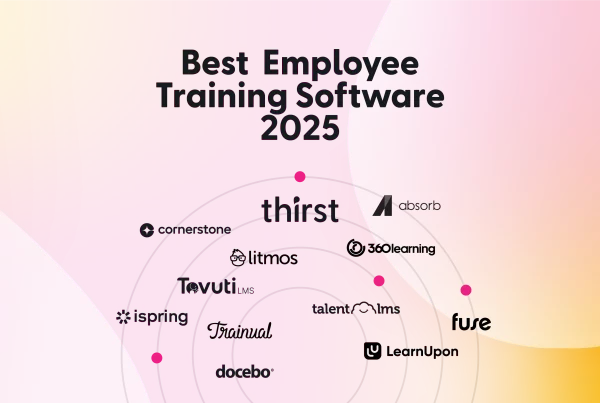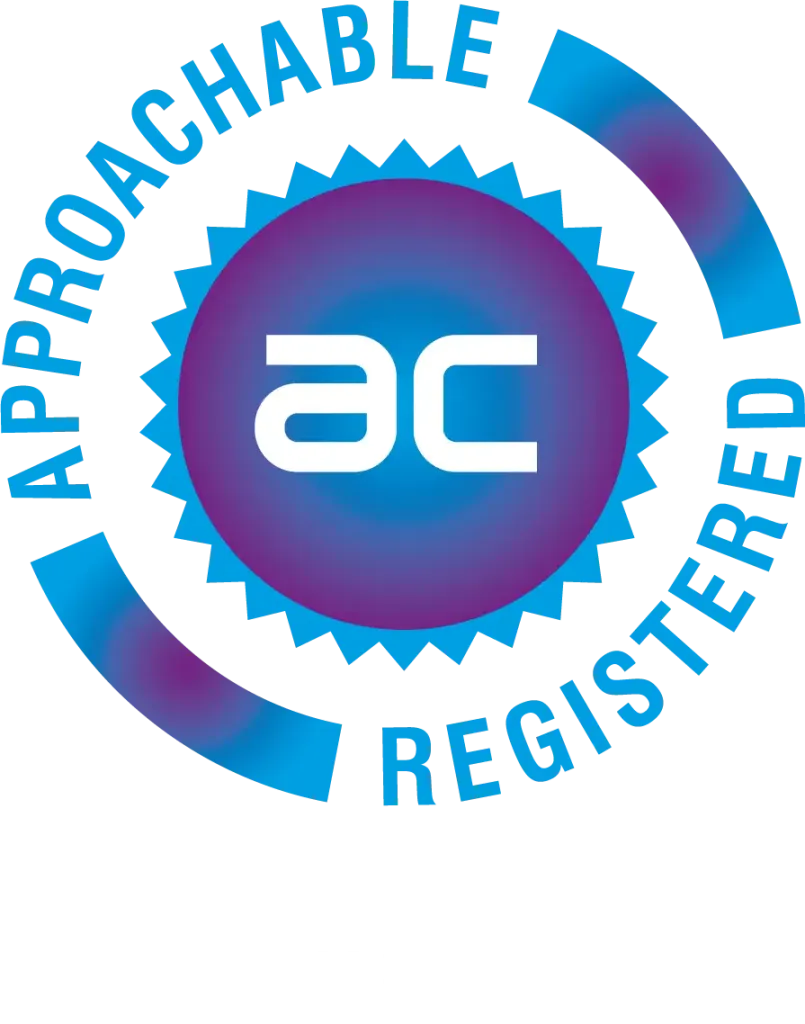For every business to thrive, it must understand where it excels and where it underperforms.
A successful business optimises performance whilst eliminating shortfalls.
And the only way to do this is to stop, analyse performance and make improvements.
Sounds complicated, right?
Well, thankfully, it’s not too much of a head-scratcher. And it all starts with a learning analysis.
Keep reading and the Thirst team will explain the burning questions L&D providers about learning analyses, including:
- What is a learning needs analysis ✅
- How to conduct a learning needs analysis ✅
- Training needs analysis ✅
- The benefits of a learning needs analysis ✅
Interested in learning more? Let’s get started.👇
What is a learning needs analysis?
A learning needs analysis is a process that highlights any training employees should undertake to thrive in their role. It’s how employees learn what they can do to upskill and optimise cross-departmental performance. 🔥 🔥
Think of it this way: to identify which areas of L&D you should focus on to improve the knowledge, skills and abilities of your employees, and by extension your business, the first thing to do is perform a learning needs analysis.
With the results you can then begin to develop tailored training programs which provide your business with the tools it needs to thrive in today’s fluid commercial environment.
In essence, a learning needs analysis is the first step to eliminating skills gaps and building an effective team.
How to conduct a learning needs analysis
To create impactful L&D programs you first need to conduct a comprehensive learning needs analysis. Review historical data, first-hand experiences, and future goals and you’ll be able to tailor all L&D activities to what your organisation requires.
Not sure where to start. Don’t worry, we’ve got you covered.🙌
Below are the 8 essential actions of a honed, valuable learning needs analysis process. 👇 👇 👇 👇
1. Determine your goals
Your organisation’s goals are changing, and evolving constantly. So too are the roles and responsibilities of your employees. Be sure to align all L&D training programs with your short and long-term goals.
👉 To determine your goals, consider:
- Potential outcomes and the improvements you can make
- How you’ll measure progress, success and failure
- The training needed to achieve your goals
Be sure to set expectations and align L&D actions accordingly. Split this into awareness, application and mastery.
2. Complete a cost analysis
The next stage is to complete a cost analysis. Why? This is the only way to understand the ROI of running L&D programs.
Typical costs to consider include training content development and delivery (in-house or external), training evaluation time, lost productivity, even travel and admin expenses.
3. Choose the candidates
👉 Now choose the candidates you wish to participate in any L&D programs. Survey or review employees to gauge skill sets and levels of expertise, training desires and ambitions. Gather feedback from colleagues and direct managers to identify gaps in knowledge and skills.
Once you have a broad understanding of cross-departmental abilities, choose the candidates that would benefit the most from specific L&D.
4. Assess knowledge and skillsets
👉 Measure chosen candidates’ current skill levels by asking them to complete different assessments. Compare the results against the desired knowledge and expertise required of candidates. Note knowledge and skills gaps and compare them against feedback findings.
Begin planning an L&D program that addresses all shortfalls in experience or skills, prioritising those that specifically hinder departmental performance.
5. Recruit subject matter experts
👉 Ask subject matter experts within the business to support the L&D program. If an external expert is required, research and source those experts capable of delivering training essential to everyone participating in the L&D program.
6. Deliver your program
👉 Tailor your program to the preferred learning style of all participants. Be sure to cater to the participant’s preferred learning style, and individual and business goals whilst maximising engagement.
You could combine group and 1-2-1 learning (either in-person or online) with experimental aspects, like micro-learning modules, interactive and reading elements, and even conferences – if beneficial.
7. Review and Refine
👉 When the program has been completed, you can review its success and identify aspects that can be refined in the future. Ask yourself what was the learner’s experience? How did the program improve employee performance? Will the program help your organisation to achieve its goals? What was the ROI, and can it be improved?
Answering these questions will help you to design better, more successful L&D programs in the future.
Learning needs analysis template introduction
👉 Unsure where to start? We can help.
Below is a basic learning needs analysis template to help you better understand the process you need to follow. ⬇️
From performance review to prioritising which knowledge and skills gaps to close, this step-by-step training needs analysis template will help you to organise your L&D program.
The benefits of a learning need analysis
The benefits of completing a learning need analysis are clear, and applicable to organisations of all descriptions. Something that employers need to fully understand before they implement specific L&D activities.
In short, learning needs analyses allow businesses to make foundational decisions to improve performance, efficiency and employee satisfaction whilst streamlining operations.
What does this look like? Find out below. 👇 👇 👇 👇
Closing skills gaps and making better use of L&D budgets
Understanding skills gaps will help your organisation to make astute L&D decisions.
You’ll discover where the largest skills gaps are and be able to focus resources like time and money on bridging these skills gaps.
Take a proactive approach with your L&D and you’ll be able to ensure that all your colleagues have the requisite skills to excel in their roles.
Basically, with a little forethought, you’ll achieve a better ROI on your L&D spend.
Prioritise your L&D needs
Knowing which L&D training to focus your resources on can be difficult.
After all, skills deficits of all types should be addressed, right?
Well, it’s important to sit down and consider your L&D needs.
Which skills deficit should you absolutely address immediately?
Is there L&D training that can be delayed to the next quarter or fiscal year?
Think about it this way, you have a large customer-facing workforce…yet you have an underwhelming quarterly sales performance. You might want to prioritise developing top-notch L&D customer-facing skills over, for example, L&D workshops explaining the finer points of specific IT software like Confluence.
Foster a strong culture
People working in organisations want to feel valued, and supported.
They want to feel like they have the infrastructure needed to excel. Achieve their ambitions. Provide a strong L&D strategy, one that propels people towards their goals, and you’ll create a culture where people will feel that they’ll be able to thrive and grow. 🌱
Build an environment based on achieving professional and personal goals, where people can experience a tangible contribution and you’ll pivot your culture towards success.
Invest in L&D upskilling and you’ll boost people’s skillsets and motivation. And when people feel like they’re supported, valued, and like they know what they’re doing, their performance gets a real shot in the arm. 💪
L&D is one of the key drivers of organisational engagement.
It makes people think, ‘If an organisation is investing in me then they must want me.’
Happier people perform their jobs better. 🚀
They’re also less likely to look for new challenges, either within the organisation or not.
This improves retention rates and collective morale.
Make your business more compliant
Let’s face it, compliance is integral to a range of organisations far and wide. There’s no getting around it. To remain compliant, organisations must first identify if employees hold the requisite accreditations to perform their role.
The easiest way to do this? A training needs analysis will give you valuable insight into those teams and departments that must be upskilled to ensure business-wide compliance standards are met.
Close any knowledge and skills gaps with Thirst
The Thirst AI-powered learning platform empowers L&D professionals to accelerate their learning culture, talent acquisition, leadership development, and internal mobility. It’s your chance to close your skills gap—fast. ☺️
Interested in learning more? Book a demo today. 👍
For more e-learning insights, resources and information, discover the Thirst blog.
You may also enjoy:
Overcoming The 7 Biggest Barriers to Learning Success | What Is Social Learning Theory, and Why Is It Important? | The 4 Phases of a Successful Employee Onboarding Process









